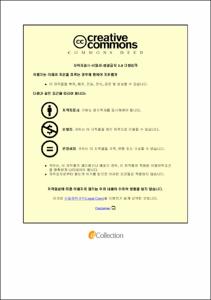플레이트 핀 열교환기 내 R-1234yf의 비등 열전달 및 압력강하 특성
- Alternative Title
- Boiling Heat Transfer and Pressure Drop Characteristics of R-1234yf in a Plate Fin Heat Exchager
- Abstract
- Freon-based refrigerants with excellent thermodynamic properties have recently begun to be regulated as environmental problems arise. As an alternative to this, HFO-based refrigerants that have very similar physical properties to existing refrigerants but have very little impact on the environment are attracting attention. Among them, R-1234yf as an alternative refrigerant to R-134a, which is an HFC-based refrigerant, is in the spotlight in the next-generation refrigeration and air conditioning industry. In a refrigeration system, heat exchange through a heat exchanger is accompanied in the process of absorbing and dissipating heat accompanied by a phase change. Although several heat exchangers are being used, they are currently attracting attention in the refrigeration and air conditioning industry due to the unique advantages of plate fin heat exchangers. However, the case of applying the plate fin heat exchanger is limited to the large-capacity heat exchange used in the ultra-low temperature region, and there is no case of applying it to a refrigeration and air conditioning system using an eco-friendly refrigerant as the working fluid. Therefore, in this paper, we provide basic data on the plate fin heat exchanger using R-1234yf, an eco-friendly refrigerant, by experimentally analyzing the heat transfer and pressure drop characteristics during the boiling process of the plate fin heat exchanger applied to the refrigeration and air conditioning system for R-1234yf. The experimental device consists of a receiver and an inserted heat exchanger, a plate heat exchanger, a magnetic gear pump, a mass flow meter, a preheater, and a test section. The pressure of the system was controlled through the heat exchanger inserted into the receiver and the plate heat exchanger at the front of the receiver. In addition, for the supercooled refrigerant, the inlet quality was controlled by using the heater at the front of the test section, and the pressure drop was measured by connecting a differential pressure sensor to the inlet and outlet of the test section. The conclusion is as follows. As the quality increased, the boiling heat transfer coefficient increased, but showed a sharp decrease in the high quality region, and the boiling heat transfer coefficient increased as the mass flux increased under all saturation temperature conditions. In addition, the influence of mass flux was found to be large in the high quality region where convective boiling is dominant. As the heat flux increases, the boiling heat transfer coefficient increases, and it can be seen that the effect of the heat flux is large in the low quality region where nuclear boiling is dominant. As the saturation temperature of the refrigerant increases, the boiling heat transfer coefficient increases, and it can be seen that the influence of the saturation temperature is greatly displayed in the low quality region where the nuclear boiling is dominant. In terms of pressure drop, the pressure drop increased as the effect of the mass flux increased under the same high quality condition, and the pressure drop decreased as the saturation temperature increased.
- Issued Date
- 2022
- Awarded Date
- 2022. 2
- Type
- Dissertation
- Keyword
- Plate fin 열교환기 비등열전달 압력강하
- Publisher
- 부경대학교
- Alternative Author(s)
- Han-Som Jeong
- Affiliation
- 부경대학교 대학원
- Department
- 대학원 냉동공조공학과
- Advisor
- 손창효
- Table Of Contents
- 제 1 장 서 론 1
1.1 연구 배경 1
1.2 대체 냉매로서의 가능성 3
1.3 플레이트 핀 열교환기 6
1.3.1 특징 7
1.3.2 적용 분야 7
1.3.3 흐름 배열 8
1.4 종래 연구 8
1.5 연구 목적 및 개요 13
제 2 장 실험 장치 및 방법 14
2.1 단상 열전달 실험 장치 14
2.2 비등 열전달 실험 장치 16
2.2.1 냉매 순환 회로 16
2.2.2 냉수 순환 회로 16
2.2.3 플레이트 핀 열교환기 19
2.3 계측기 20
2.4 실험 방법 22
2.5 실험 조건 23
2.5.1 단상 열전달 실험 조건 23
2.5.2 비등 열전달 실험 조건 23
2.6 데이터 정리 25
2.6.1 물측 열전달계수 25
2.6.2 비등 열전달계수 28
2.6.3 비등 압력강하 29
제 3 장 실험 결과 31
3.1 열전달계수 31
3.1.1 물측 단상 열전달계수 31
3.1.2 비등 열전달계수 32
3.2 비등 압력강하 37
제 4 장 결 론 39
참고문헌 41
감사의 글 44
- Degree
- Master
- Files in This Item:
-
-
Download
 플레이트 핀 열교환기 내 R-1234yf의 비등 열전달 및 압력강하 특성.pdf
기타 데이터 / 2.13 MB / Adobe PDF
플레이트 핀 열교환기 내 R-1234yf의 비등 열전달 및 압력강하 특성.pdf
기타 데이터 / 2.13 MB / Adobe PDF
-
Items in Repository are protected by copyright, with all rights reserved, unless otherwise indicated.